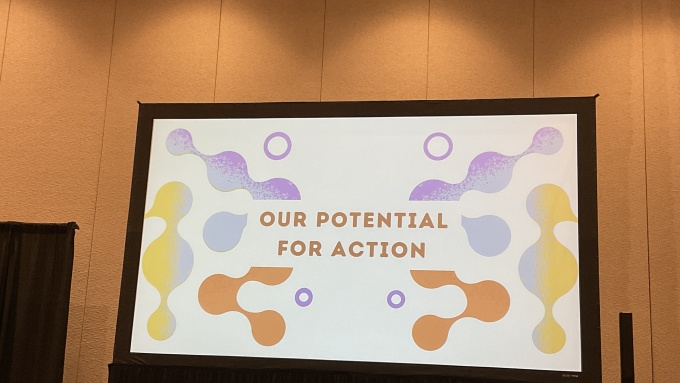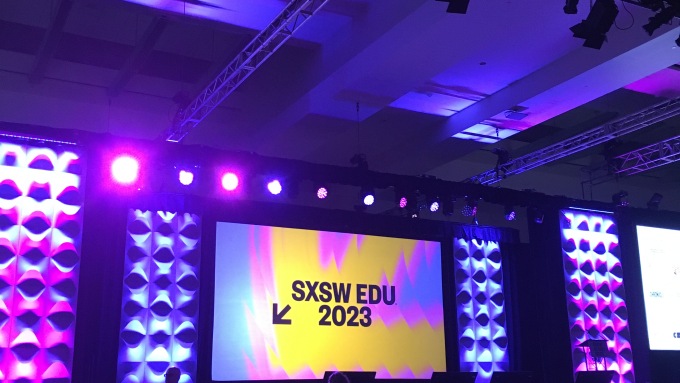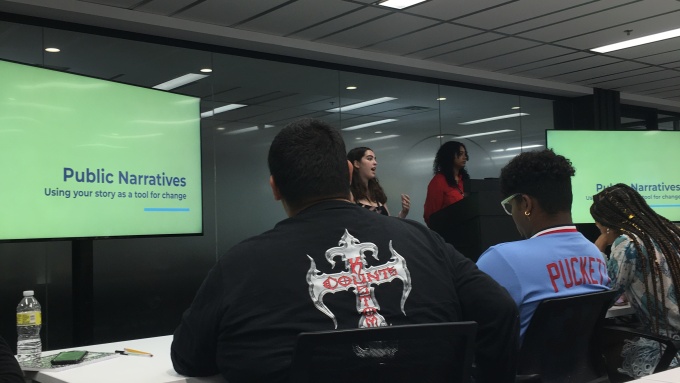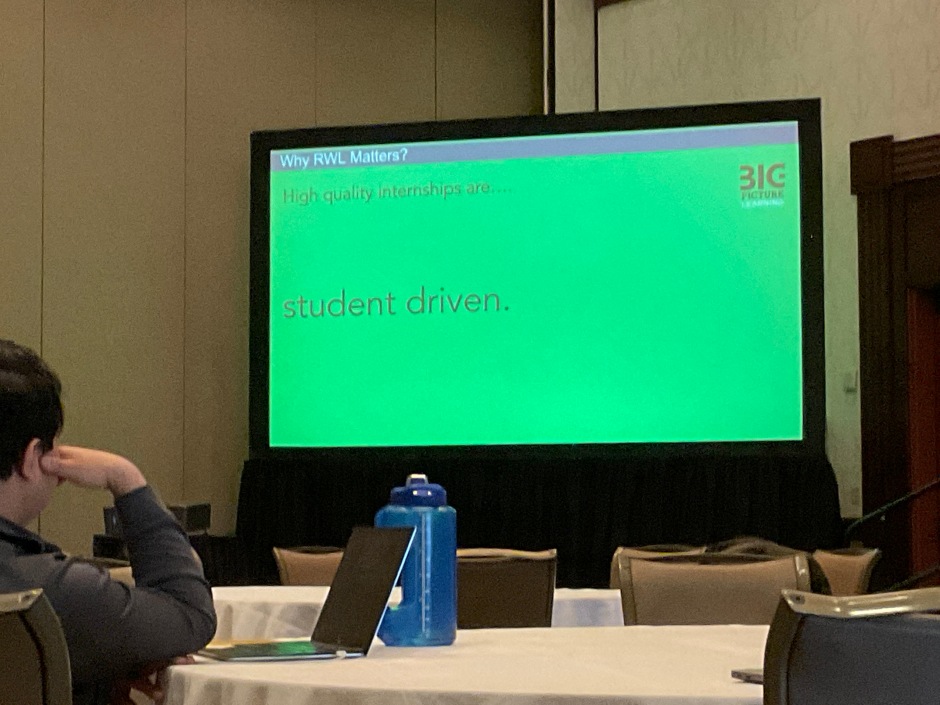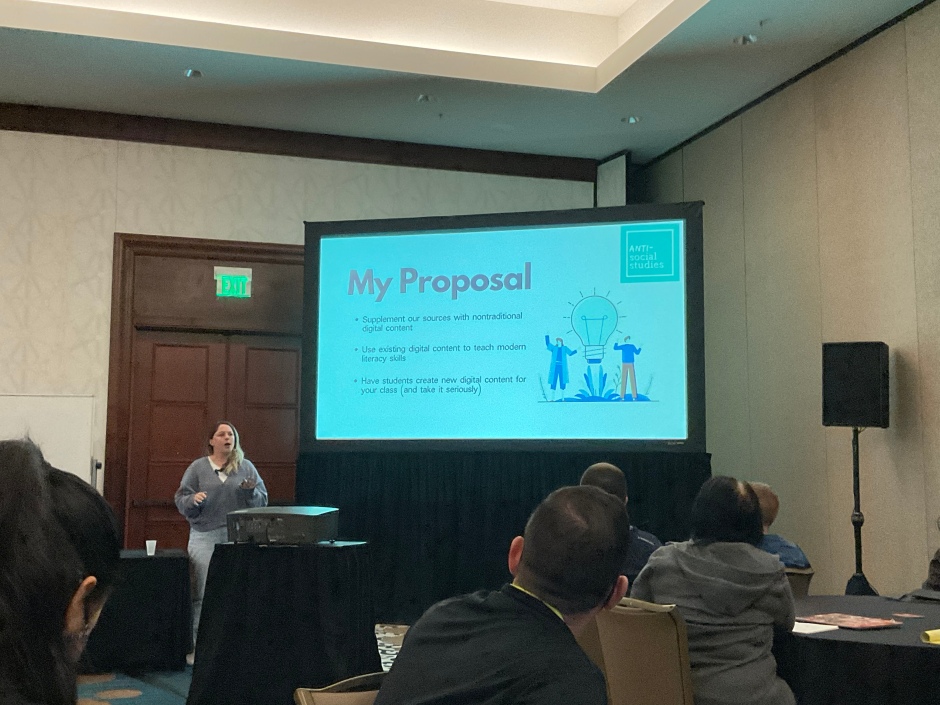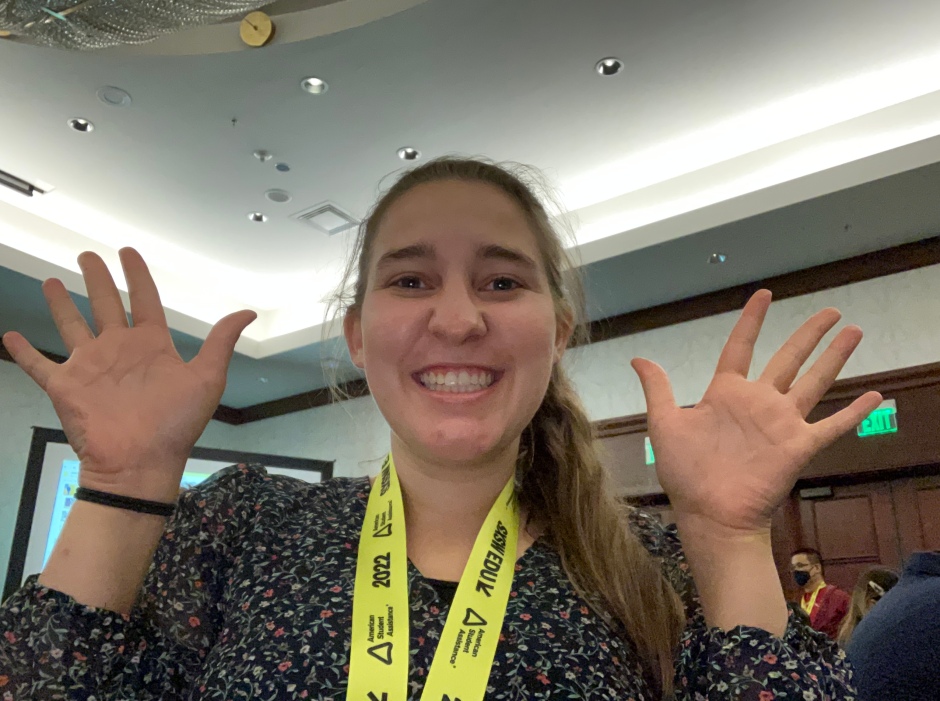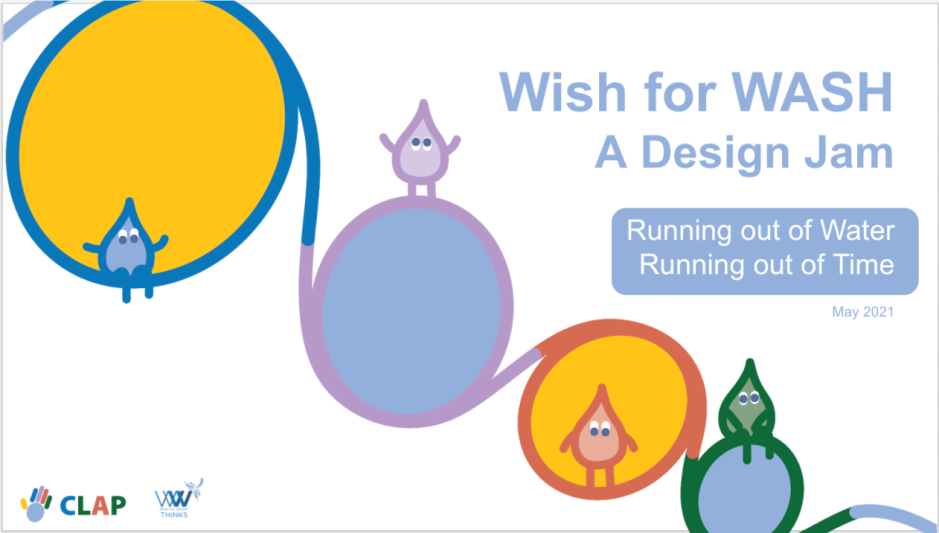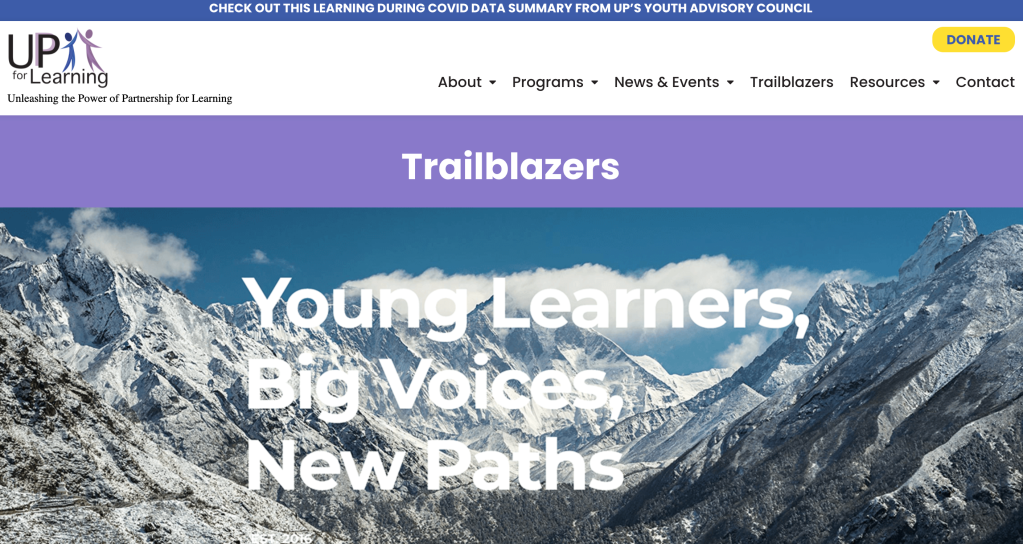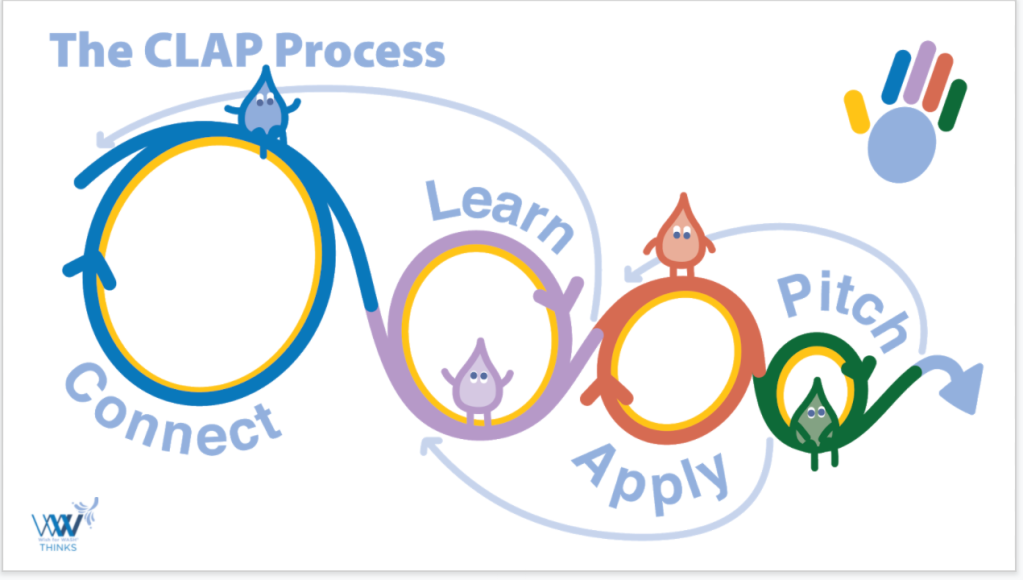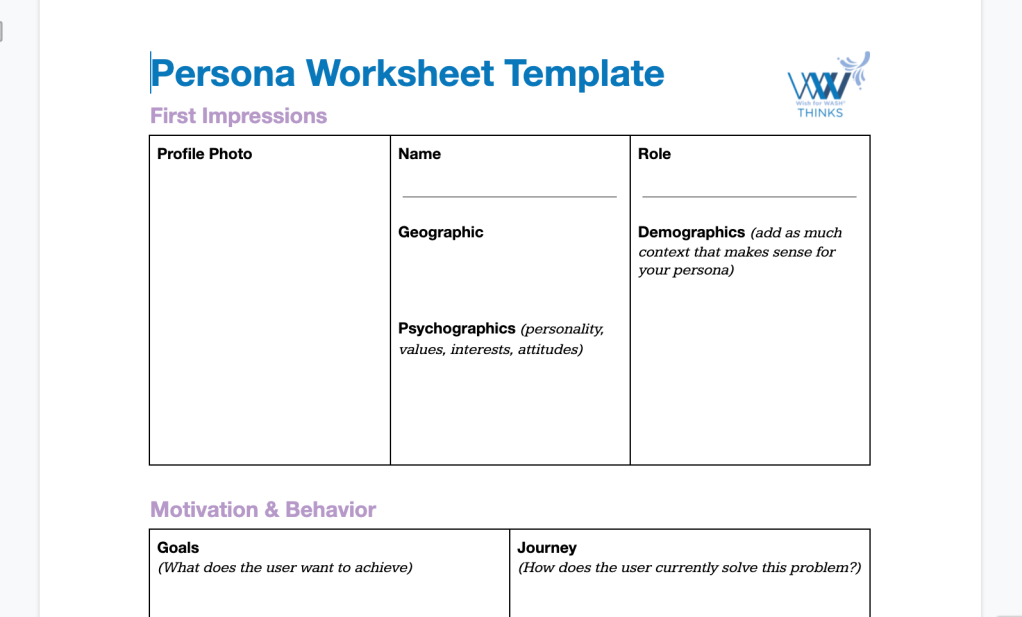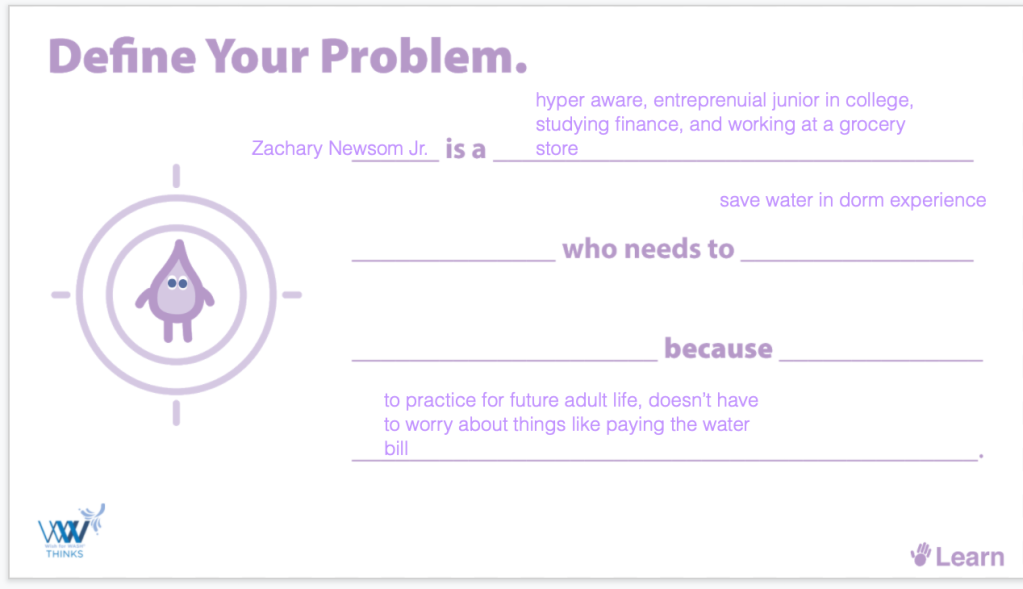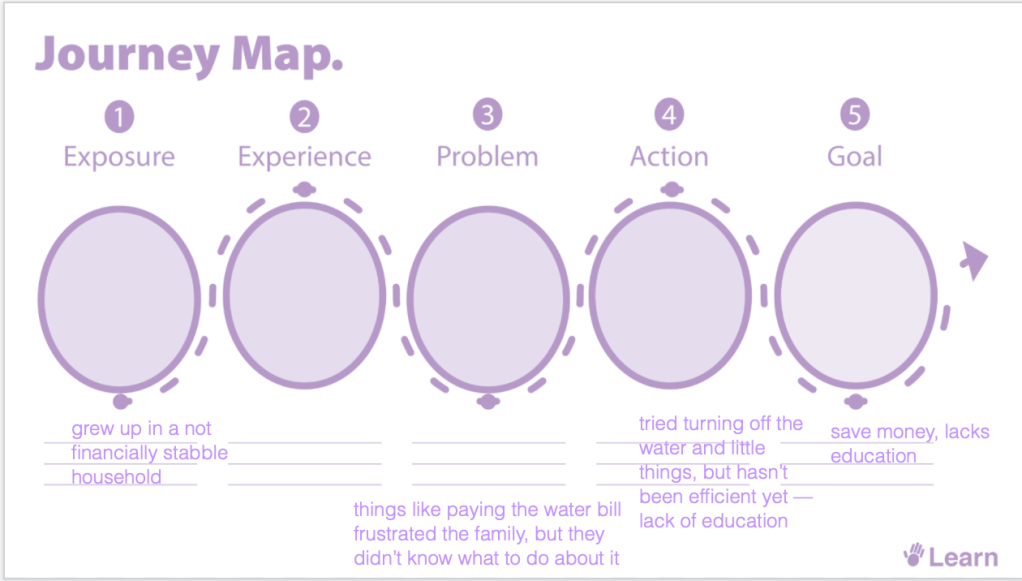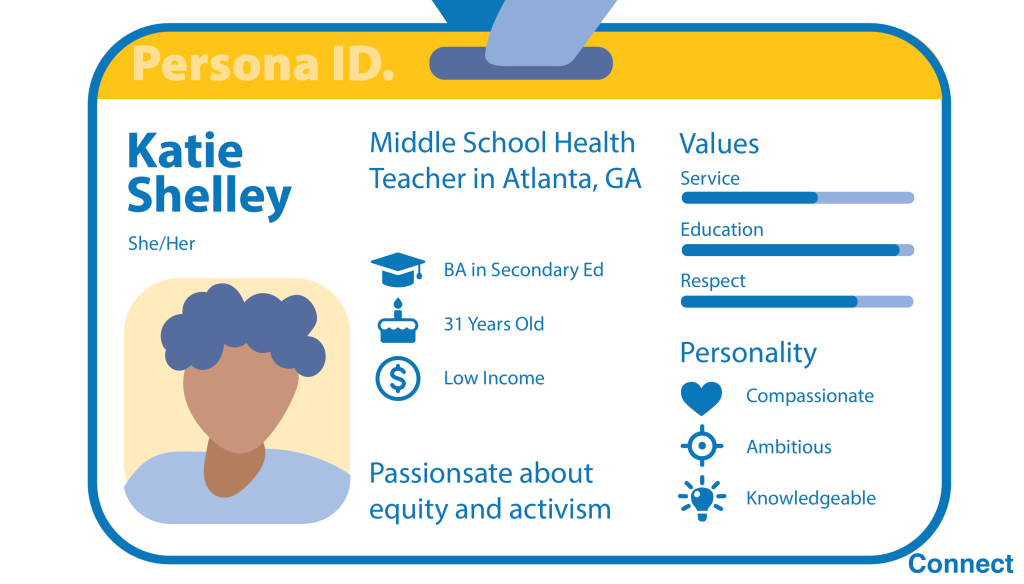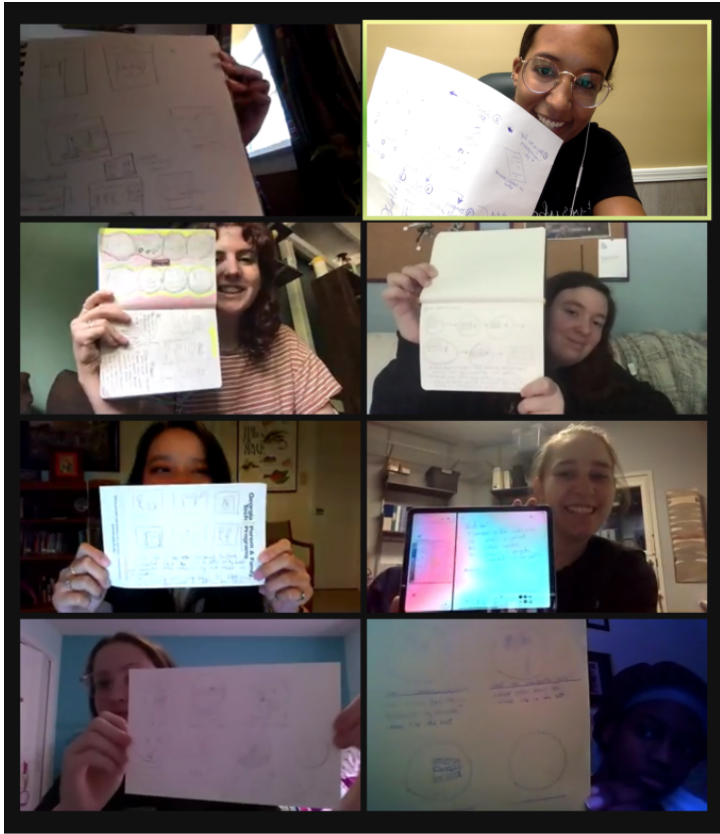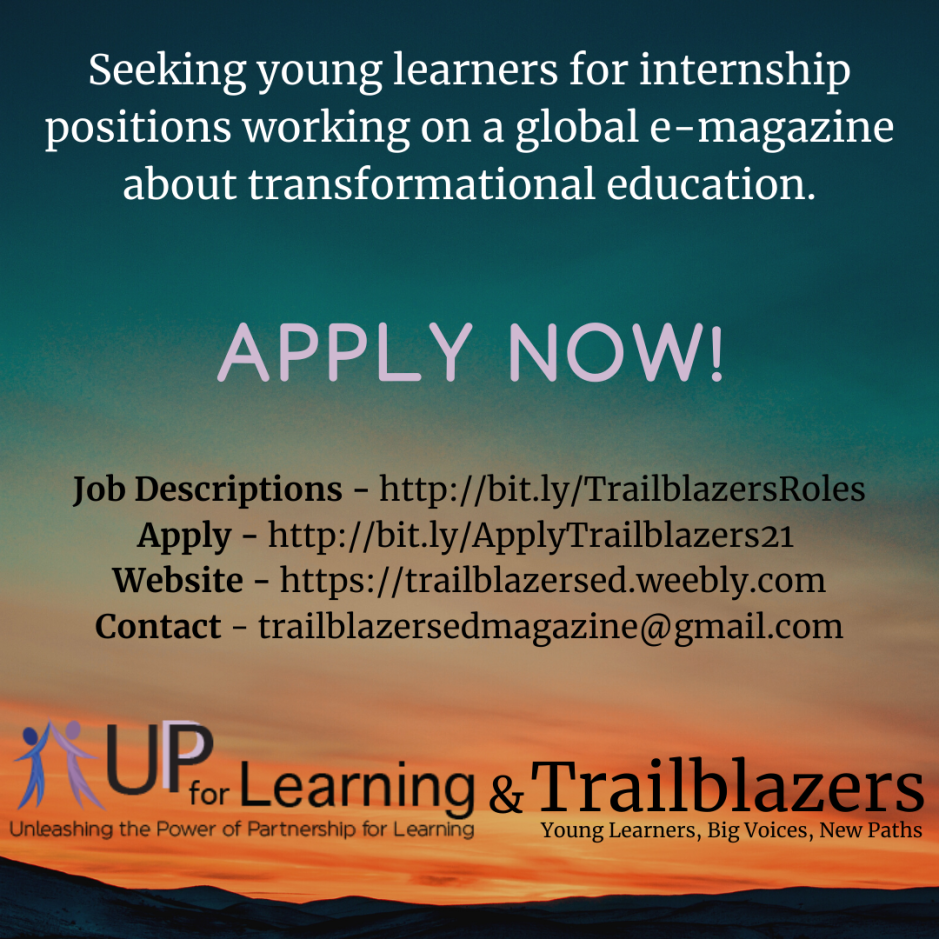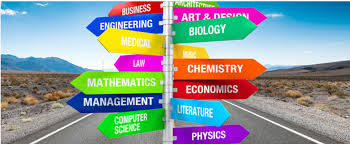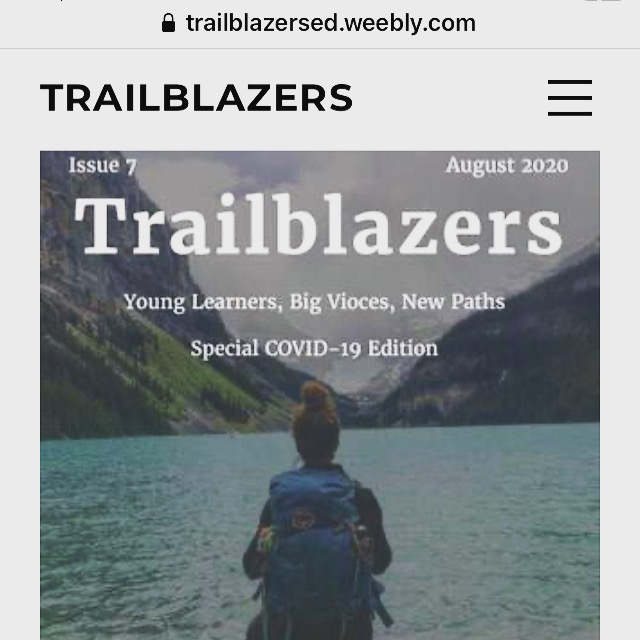It’s been a great week at SXSW 2023! I had a great session presenting, met Hank Green, had knowing what an “ekphrasis” is come in handy in conversation, saw a magic show and discovered parallels… More
Student Presence
Day 3 SXSW! I went back to the hotel a bit early today because officially got to that point where I was starting to have a cognitive load overdrive and needed a break. So much great content happening in such a short amount of time it really is fantastic!
Something that I found striking today, which I often find myself thinking about at every conference I attend, is the extreme lack of young learners present. Edu conferences tend to have extreme discounts for students to attend these events, but hardly any organizations / schools seem to take advantage of these policies by trying to get these stakeholders To attend. I know these conferences may be designed for teachers, admin, etc. but everyone here will spend all day talking about how, ”we must include student voice,” yet where is the action where it matters? Where are the students?!?!
There are a few other young learners present other than me and my sister, however, even these learners seem to just be around for their one session they’re presenting at and then disappear. To be fair, perhaps they could have just been at sessions I wasn’t at, or my sister, but I haven’t seen anyone yet in any session or the hall which makes this feel unlikely.
Furthermore, within the 2 sessions where I have seen students involved, the students were primarily asked to talk about their past experiences. Then, as is consistent with other conferences I’ve been to, the last question is something to the extent of, ”If you had a magic wand” or ”If you could trade places with x” then ”what would you change about school?”
Even in the keynote presentation for today, students were involved, which is a great first step that I don’t want to undermine, and some great things were said during the conversation from learners of all ages. I quoted many in my Tweets today. However, that said, these students were primarily brought in to talk about their experience learning during COVID… The reason this bothered me is because COVID shut school down 2 years ago; if we are only just now asking students about their experience on something that was such a huge radical issue, then we are too late.
Additionally, beyond wishing that more young learners were involved in education conferences, I wish the students that were involved were asked more questions about their current observations and more about their thoughts on the future. Students have way more thoughts and ideas than just those relevant to their past experiences in education. I know educators know this because it gets talked about in every single session in almost every single conversation.
Now the question is who will start taking the next steps to not just include students in conversations within the safety of their own learning environments but on a larger scale, bringing young learners beyond their own learning environments into the conversations of the nation’s education system?
Research & Play
Day 2 of SXSW! Themes of the day for my thinking and learning were around the need for more research and play in education at all levels.
These aren’t particularly surprising or new concepts. I mean any time you go to a conference you expect to some extent to hear about current research being conducted and analyzed in the field. And the belief that learning and schooling should be fun is something I’ve always been a big promoter of. [Quick clarification – to me ”fun” is most closely synonymous with the ideas of being enjoyable and meaningful, being fun does not mean ”not challenging” or ”easy” or ”without failure.” I’ve written about this before but sadly cannot find the old blog post to link, but if anyone does find it let me know… #strugglewithwrittinglots]
Due to the fact that these are not new concepts, I’m not going to dwell long on them. But I did think it was worth emphasizing the importance of research and play in education.
My morning today started, after the keynote speaker, with hearing about new edTech tools. The three tools discussed in the session included a tool focused on teacher professional development, one that focused on child literacy, and another that focused on making research more available to teachers. The discussion that followed from this presentation further elaborated on the ever challenging issue that despite the amount of research we already have on best practices in learning and teaching, we still have so little of this research actually being utilized in our schools.
This conversation continued throughout my day as I went into other sessions. I further heard presentations about interesting new research on community-centered design and student engagement survey’s. Then I learned about a group of educators collaborating across the world through the development of student curated comics. Furthermore, I saw Stanford d.School’s vision of the future exhibition. Finally, I finished the day off by hearing stories about communities that came together to reinvent public spaces with the intent of making fun, interactive, community installations such as interactive learning playgrounds.
At all of these sessions, during some point or another we had a discussion yet again about the importance for empowering and training teachers so that they can make intentional design choices and informed iterates to ultimately provide better learning for students. And this better learning for students was also always qualified with the idea of the knowledge and activities actually bringing value, meaning, and/or enjoyment to students, ie ”fun.”
It’s truly not rocket science, but the quote that stuck with me all day came from that very first session, ”If you’re not taking teacher learning seriously, then you’re not taking student learning seriously.”
Teaching Social Media
Day one of SXSW was great! Loved meeting new people and re-connecting with those I haven’t seen in several years, and had so many great conversations already about the future of edu. One conversation that really resonated with me was the session lead by Emily Glankler called ”Going Beyond the Textbook to Create Life-Long Learners.”
The session focused on the idea that if we want to create life-long learners, then we need to teach kids ways to learn beyond textbooks, because when does any adult actually choose a textbook as their first source of information? Close to never. Let’s be real, we Google it. Then we look at Wikipedia then maybe we research a bit more, maybe find a news site, maybe text a friend, watch a YouTube video, look at Twitter updates for a live event, etc. The point is, we have a lot of sources of information available to us now a days, and why not integrate these methods that we as adults actually use, into our classrooms?
This topic particularly stuck with me because just last week I wrote a journal entry for my Ethics of Business class that also focused on the ethics of social media. First I want to share what I wrote last week after class, then I will share how the conference session today further made me think of this topic:
It is pretty much impossible for any social media (SM) company to fact check all posts. There are millions a day and the time it would take to properly categorize, sort, find an appropriate number of resources, etc. would make for a process not efficient enough to function. Not to mention, posts are often biased to a point where it is hard to determine fake news because sometimes it might just be facts presented from a skewed perspective. Thus, we can’t possibly expect SM companies to be entirely responsible for stopping the spreading of false information / fake news.
However, I do think SM companies and society as a whole benefit from SM companies caring about trying to stop the spreading of false info and fake news despite their inability to entirely solve the problem. In class we brainstormed a few ideas that might at least help the problem, and I do think SM companies have a responsibility to at least consider options such as these and make their best attempt to minimize this issue.
At a minimum, SM companies could be more transparent about their opinions on fake news and what they are doing if anything to mitigate the issue and perhaps publishing some extent about how their algorithms work so there could be a level of accountability about trying to at least be accountable for news that gets heavier traffic (vs being responsible for everything). One way to help this could be by adding a way for users to request a fact check, like if there was a “question mark” option in addition to a like, so if a post got enough question marks then it would alert the company to help provide a fact check. Perhaps even other users could even help by providing resources to help the fact checking process if they see question marks.
Some might also argue that current SM shouldn’t have anything to do with news anyway. In that case, what if there was an entirely different platform that was specifically for news and that way fact checking and providing multiple resources could be just a part of the platform vs feeling in the way of the more traditional SM posts like memes and life updates. What if in addition to Twitter, there was a spin off platform called “Twitter News” or something, so you could separate those very different types of content and perhaps better manage the fake news since you wouldn’t have to first sort through what even needs to be fact checked.
In regard to the other issues with SM, I think SM companies definitely have a social responsibility to concerns around mental health especially with younger users. SM was designed to connect people, and it is great at that; keeping in touch with old friends, networking with potential business partners, exploring different cultural norms, these are all great benefits of social media. However, most of these benefits aren’t really achieved until you’re 18; younger than that, there are far more cons then pros. For most minors, your friends probably go to school with you or you see on a regular basis at an activity and there aren’t likely too many outside of one of those categories and if there are, there is nothing stopping you from texting or calling them. When teens go on SM they often just compare themselves to others which can lead to social anxiety, eating disorders, self-loathing, etc. and/or at a minimum they likely get sucked into hours of screen time which is bad for physical health. There is ample data showing that SM can be harmful, and I truly think these risks make it something that should not be used by minors the same way we don’t want minors drinking alcohol. Truthfully, I imagine for minors there are almost as many if not more cases of serious harm caused by SM than alcohol.
I know for some people SM can be great for feeling like you are a part of a community, but I think for the mass majority it does the opposite and more often makes you feel discluded vs included. Thus I propose that there are other alternatives for solving for the issue of making minors feel included despite their differences other than SM.
This also somewhat could depend on your definition of SM; perhaps there are virtual support groups that could be more well known or maybe a “Facebook for kids” kind of thing that somehow is more structured around groups vs just being individual’s posting whatever. I’m sure there are scientists that could come up with something more developmentally appropriate because right now everything is designed based on the business of making clicks vs the business of connecting people.
After today’s session, I was also reminded of another part to our class conversation that I didn’t discuss in my journal. Yes there is a part of me that wonders if SM should be restricted to 18+, but the other option is that educators / schools could just take a greater responsibility over effectively teaching kids about how to use SM in a beneficial way. The conference session today helped further suggest that this truly is necessary. Social media isn’t really going anywhere, and there is no way companies would actually add an age restriction and no way teens will stop using these platforms even if they had to lie about their age. So if we know students are using these platforms, we might as well teach them how to use them properly to actually gain information and increase learning.
Emily offered a great list of some starting places for informational SM accounts that educators could look into and potentially use clicks in their class. She also suggested incorporating project based learning that utilized less traditional media sources, such as making an instagram story or a podcast episode.
Next Steps- From Young Learner to Young Professional
Landed in Austin, Texas this week for the annual South by South West (SXSW) EDU conference. I always make sure to blog everyday after a conference, but I realized, it would be a bit strange for me to post about the conference without first giving some other life updates since I haven’t posted since September 2021 apparently…
First up, Trailblazers Issue 9 was published!!! This student-driven magazine about transformative education has been such a big part of my career life over the past 6 years, so it’s crazy to believe that we are now working on our 10th issue, officially reaching double digits! It’s also crazy to think I am finally at the point in my life where it is time to start handing Trailblazers over to the next generation of young learners… We have officially named our new Executive Director who I have been mentoring through the Issue 10 publication process so she can then officially take over for issue 11 as I move into more of a senior advisor role. I will continue to provide advice and feedback as needed, but I will no longer be a driving force in creating each magazine issue.
Part of the reason for this transition is because I will be graduating college in May with a degree in Business Administration concentrating in Leadership and Organizational Management and a certificate in Social Psychology from Georgia Tech.
After graduation, I’m excited to officially announce that I will be working full time with Education Reimagined starting in June! I’ve been a member of the Education Reimagined community since high school and this community is what initially inspired Trailblazers and a big part of what has kept me involved in the k12 conversation throughout college. Timing worked out nicely where they were looking to expand their team right as I was looking to find a full time opportunity, and it just seemed like a perfect fit for my next steps.
If you know me well or follow my blog somewhat consistently, you might recall I was originally looking to go to graduate school in the fall. Specifically, I was planning to go to Finland for a two year masters program and had been working all last summer on applying for a Fulbright Fellowship to make this happen. Obviously I have pivoted from this plan, so here is the short story there:
Timing wasn’t right. Over the past few months since I last blogged, I have had several family members end up in the hospital (they are okay), COVID was yet again increasing rates, international situations became more questionable, I was not selected as a Fulbright finalist, and some of my ptsd from being abroad during the start of pandemic and feeling particularly isolated continued to increase along with anxiety around never having been to Finland before and committing to two years there. All these factors together made me decide it was best to wait on Finland right now. University of Helsinki will still be there if I later get a chance to visit and then decide it really is something I want to do. Furthermore, even if not Finland, I do still plan to go to graduate school at some point in time. Not because I think I need a higher degree, but because I really do enjoy learning and elements of schooling and, assuming I find the right program, I would like the opportunity to further research, discuss, and design education with others similarly passionate about transforming our current paradigm. I also decided, that going into a full time job first would make my eventual graduate school experience better, because right now, I’m still not fully sure what my role is going to be in these conversations on education and I think some time working may help me narrow my interests and talents to make my graduate school experience more focused and productive.
This transition from young learner into young professional has been a very odd transition since so much of my experience in education thus far has been from the perspective of, ”hey I’m providing student voice in this conversation!” My young learner status was always one of my primary self-selling points, and now it’s shifting into something else that I’m still discovering…
With this in mind, I’m excited to see some of this evolution with participating in SXSW this year as I start to age out of my ”young learner” status. So stay tuned for my insights from the conference!
Learning to Walk Again
It’s been two weeks since school started live and in person again. It’s been a crazy two weeks…
And it wasn’t crazy in the way most people have asked. Adults keep asking me, “Oh is it weird returning to a new normal? Are things crazy different then how you remembered? Is it strange to see people again?”
The answer to all of those questions is a resounding no. One of the crazy things is in fact that things feel so normal / familiar. I’m shocked by how many people are not wearing masks – students and professors. I’m shocked that there aren’t any procedures in place to maintain social distancing. I’m shocked that so many classes went right back to mandatory attendance policies.
The crazy thing about school has not been that everything is different or that we’re experiencing a new normal – the crazy thing is that some people are still trying to revert back to a normal that simply can’t keep existing.
Another reason this week has been crazy is because I’m having to re-learn the concept / pattern / habit (whatever you want to call it) of walking to different classes in a short amount of time.
It seems so silly, but I’ve talked to so many other students since school started who have all said the same thing: the hardest adjustment was learning how to walk again.
The process of school is so much more involved then I had ever thought about before: Remembering how to manage your time to account for different distances. Weighing the pros and cons of walking or waiting for a bus. The discomfort of getting to class out of breath, because even when you have plenty of time, you’re so much more paranoid about being late.
Which brings me to the third reason school has been crazy so far: anxiety.
I have no specific research to back up this claim — I could probably find one if I looked — but from my experience and observational data, I would argue general levels of anxiety have gone up exponentially since the pandemic.
I know in my own experience, I’ve definitely found myself incredibly more anxious in the past year.
I had a minor panic attack after going tubbing from being overwhelmed by not really knowing my surroundings and getting confused with directions to get food but then meet in a different location and how that whole process was working while the other adults went to park the cars. (Important to note though that I hate tubbing, but decided to do anyway with family, but had an even more awful time then expected because on top of not liking tubbing normally, my tube was slowly deflating as we went down the river, so I was getting stuck and beat up by rocks on the bottom far more than you should — all that to say, I was already not in a great mental state).
I also found myself having a hard time getting to sleep the first few nights in my apartment because I was having ptsd to being alone in New Zealand, despite knowing my family lives 20 minutes away from my apartment now.
Even little things like making it to class on time, making sure I’m understanding when all of my assignments are due, and feeling behind on making decisions for the year like what gymnastics meets we should attend have all been stressing me out more than normal. And this stress and anxiety also inhibits creativity and brain processing which has been super evident as I’ve struggled more than any prior year to develop gymnastics routines for this season.
And I’ve noticed this increase in anxiety not just from me, but from students of all ages. As a gymnastics coach I work with kids 3-16 for at least 12 hours a week and I’ve noticed we’ve had a lot more concerns about “having time to do homework,” questions upon questions clarifying event assignments, nerves about coming into practice, asking to leave practice because of “not feeling well” which after discussion is found to be anxiety driven. These amongst other observable traits all lead me to believe there has been a wide spread increase in anxiety. And our gym practices haven’t changed, so I don’t think it’s because of anything we’re doing differently.
At this point I feel like I need a disclaimer that I am currently doing fine and am very good at knowing myself and managing my anxiety. I write these examples not as some cry for help, but to give tangible evidence to support my hypothesis.
So what do we do with this? We observe increased rates of anxiety, which is honestly somewhat expected after living through one of the most uncertain and volatile years of our life, but what are we going to do about it?
As I said at the beginning of this post, from a students perspective, school feels to me like it’s trying to “go back to normal” and this simply won’t cut it.
For example, some of my professors have made it abundantly clear about how, “This is an in person class, so attendance is mandatory and will be tracked and contribute to your grade.” I truly think it’s ridiculous that after the year we just had we are going right back to required attendance. If you want students to show up in person don’t require attendance, make being present the more desirable option.
This past year we have proven that online lectures are very doable and in some ways more desirable; if you are just going to listen to a lecture, it’s a lot less stressful to just roll out of bed a bit later, stay in PJs, and listen in from the comfort of your bedroom rather than everything involved with going to an in person lecture. If I’m going to a class that is just going to involve being lectured at, there is 0 benefit to being in person vs online. I can send questions in the chat.
Now I understand from a teacher perspective that it’s really awkward to present to a ghost audience (when you can’t see anyone or hear little laughs). But rather than require attendance to make sure people show up, why not just design your class in a way that students actually want to show up…?
The classes that I don’t mind putting up with the extra stress of going in person are the ones that I know with have in class group work; games, challenges, projects, whatever it might be, actual human interaction is worth coming to class for, but just listening to someone talk for an hour really isn’t. I’d rather watch a video lecture at 2x speed then use that time for more meetings, completing work, or just doing something fun and creative.
After these first two weeks of crazy, I think I’m starting to get back into a flow with my schedule, but I’m deeply curious about what other realizations will come about this semester as we transition into this new future of education brought about by the pandemic. We are at a pivotal point where we must choose if we are going to move back to the familiar or more forward to the unknown. COVID times have been hard to say the least, but perhaps not all of the changes to education were so bad. While initially schools changed out of necessity, I hope schools now chose to take time to reflect on what changes could be worth keeping around.
Progress in Action
I haven’t posted recently for a few reasons:
- I’ve been super busy…
- I’ve actually been working on a lot of things recently that have had to stay under the radar… UNTIL NOW
So I am happy to finally give some big updates on lots of projects I’ve been working on for over a year through COVID and all, and we’ve been making such great progress!!
First up, school update!
School
While I did start college in 2017 (4 years ago) I am not graduating this year. My time in New Zealand plus COVID made me shift things back, so I will now be graduating in May of 2022 with a Business Administration degree and Social Psychology certificate. In the mean time, I will be spending the summer and next two semesters continuing to coach gymnastics, conduct research in team dynamics, and work for the two non-profit organizations I’ve been with for almost 5 years – Trailblazers and Wish for WASH. Additionally, I am spending the summer writing my application for a Fulbright Fellowship to study education at grad school in Finland.
Trailblazers
Last I wrote about Trailblazers, the student driven magazine about transformative education that I co-founded four and a half years ago, I was just announcing our new partnership with UP for Learning and our search for a new production team. I’m excited to say that we now officially have an awesome team of 8 learners ranging from sophomore year of high school – freshman year of college and representing several different schools and states around the country!! We had our first team meeting in April and have been slowly making progress towards Issue 8 of our magazine which we hope to have published late June 2021. I’m excited for all of the new things that will come from this new team including more efficiency and long term sustainability internally and more diversity with the stories we share and hopefully an increase in how often we share as well! Additionally, for the first time ever Trailblazers Production Team members will be getting compensated for their work on the magazine which is super cool to see the organization grow in this way after 5 years! Anyone interested in connecting with Trailblazers can reach out to trailblazersedmagazine@gmail.com and/or follow us on Instagram and Twitter @TrailblazersEd
Wish for Wash
Similarly, I have also been working with the social impact organization Wish for WASH (W4W) for going on 5 years now and am excited to say that we have also seen lots of great progress this year! First off, with COVID we started making our design thinking workshops virtual. This involved a learning curve for sure, but now with almost a dozen virtual workshops under our belt, I would say we’ve gotten into a great flow. In fact, I foresee this shift to virtual facilitation for W4W having a longer lifespan than anticipated as it has allowed us to expand our audience reach drastically and make scheduling significantly simpler allowing us to facilitate more workshops per semester. We’ve also received great feedback on our virtual design jams with participants being particularly amazed and delighted by how interactive the workshop is despite being online.
On top of changing our mode of facilitation, this past semester we also began piloting our brand new design thinking process which I’m excited to finally talk about! CLAP stands for Connect, Learn, Apply, and Pitch.
We created this process for several reasons:
- To place connection/empathy at the beginning of the design thinking process – connecting with your team, the topic, and your user before anything else from research to brainstorming happens.
- To create a process with young learners as the users of our design tools, meaning tools needed to be very straight forward to use and graphically engaging.
- To enhance the level of empathy developed in a short design jam workshop (under 4 hour challenge).
The third reason to me is what makes our design tools really differentiated from other processes and guidebooks. Empathy is the core of design thinking; the definition is literally, “human-centered problem solving,” and to be human-centered, one must first empathize with their user in order to problem solve together.
However, we observed during early design jams both in person and virtual that participants often struggled with connecting their brainstorming and final ideas back to their user’s specific needs when going through the whole process at such a rapid pace, especially as a newbee to design thinking. When working on a long term design challenge, a big part of the process is identifying your user group at large then doing lots of interviews and ethnography work in order to eventually narrow down your scope to focus on one particular user or a composite user that includes generalized needs and combines insights from several users. This level of empathy work takes a lot of time though – time that doesn’t exist in a two hour design jam. Furthermore, it can often be hard to have a live user present for a short design jam, so on top of minimal time, there is also the consideration of how do you empathize without having a live interaction with a person?
These challenges lead our design team to ask:
“How might we enhance the level of empathy developed in a short design jam?”
So we went through our own design challenge starting in the fall of 2019 in tandem with on boarding new team members and introducing them to design thinking. We did lots of research on different design thinking processes to make notes on things we liked, wished, and wondered about as we began work towards creating our own process. We did this as we continued to host design jams to gain feedback from participants about what they liked, wished, and wondered about the experience.
“I felt like the group text input on the brainstorming worked out well overall but was either a little confusing or a little hard to use for some – it would be great if you could figure out an easier method/tool for this!” – Teacher participant
“I attended all three DT jams. I love that the design jams moved from least stigmatizing to most stigmatizing and in the future I wonder if our school could make this a series of mini classes where students attend all sessions and really delve into building empathy within each topic. I loved the empathy maps and story building exercises of the intended user. It was a really easy framework for the students to understand without shying away from really understanding the user experience.” – Teacher participant
“I love things like this, and I am so happy I finally got involved, but would like to do even more! I also have a product idea, not for water conservation, but something I am trying to start for a business.” – Student participant
Over time we developed the idea of “personas.” We thought, “What if we took the three how might we statements we use for our short workshops [water, sanitation, and menstrual health], but made them into long term internal design jams. If we have 2-3 people on each team interact with at least 30 people each through interviews, surveys, activities, and ethnography sessions, then we could analyze the findings and create composite users which we then use in our workshops so that these ‘made up users’ weren’t actually so made up but instead based upon real stories of real people without needing them live at our workshops.”
So that’s exactly what we did!
Fall of 2020 was all about brainstorming each team members’ Persona Research Plan. For this plan, each W4W design team member brainstormed three potential persona concepts (For example, one of our workshop topics is: “HMW de-stigmatize menstrual health?” For this topic, one member’s three persona concepts included: a middle school girl, a menstrual health and hygiene activist, and a transgender man who still experiences menstruation.) For each persona concept, designers also brainstormed 3-5 key research questions, method of interaction (interview, survey, specific activity, etc), a list of 15 people they might connect with relevant to the concept, and their next 3 steps to move forward with that concept. After developing these plans, the team worked together to give feedback and narrow so that each person went from 3 concepts to one focus concept; for some this was just picking one of their 3, for others this meant maybe merging two concepts together, and for others we came up with a totally new focus based on the discussion.
After plans were created, each designer spent 2-3 months interacting with users. Then we developed a Persona Template Tool for each designer to use as a way to analyze and connect insights to form one composite user that could be utilized in a design jam workshop.
This entire process was happening in tandem with the devolvement of our new CLAP process. So while we had a team doing user research to create these persona’s, we also had a team focused on the design and development of the process itself including questions like: “How do we visualize our process in a way that adds meaning through graphic design?” “What tools already exist in other processes that we want to build upon and what tools don’t yet exist that we want to create?” “What is our color scheme and icon character?” “How do we differentiate parts of the CLAP process and which tools should be a part of which sections?”
Starting Spring of 2021 we officially began piloting the CLAP process in our workshops with great feedback! Partners who had worked with us before and after the redesign said they loved our new look and the new tools we created. They thought it was easy to understand and really engaged their students while also doing a great job at introducing them to somewhat stigmatizing topics in a safe and open environment:
“[My daughter] talked about the period design jam for days. She (and I) had no idea about [the depth and breadth of menstrual health stigma] except for some of the ultra orthodox religions views. We are a very no nonsense household and it seems so crazy that concepts like [period-stigma] perpetuate. Hooray education and exposure!!”
By April of 2021 we were ready to start pushing the persona concepts from the research to graphics team in order to start piloting this fundamental new concept. There was a lot of back and forth about how to best present our user research to design jam participants in a way that would show depth without being overwhelming and how we would best facilitate the conversations around these personas.
In May we began our persona first test run – the template version. We realized during the process of creating these persona’s and our tools to facilitate the conversations, that perhaps a template version of these tools could also be useful if we want workshops where participants brainstorm the details of their user. Additionally, these templates could help us and others create future personas moving forward. So we tested out three new tools: Persona ID, Journey Map, and Influencing Factors. Additionally, we tested a new brainstorming tool: Digitype. And because apparently we were feeling really ambitious, we also had a new person step into the role of a workshop coach, and I personally took a stab at trying to be in the roles of both facilitator and coach during the same workshop so moving forward we can increase our max number of participants.
Despite all the new things being tested, our workshop ran on time and surprisingly smoothly and was an incredible first step towards increasing empathy and having final prototypes actually meet user needs! As a coach I noticed participants really engaging with the persona tools and starting to empathize more with their users, prototypes also started to be geared more towards user needs but I think there is still room to grow there. The teacher’s on the workshop were especially excited about the possibilities our new persona tools present:
“After each workshop we keep talking about how we love all of your graphics, and we really loved the new persona tools this time! We were actually sidebar texting during that section about how cool we thought those tools were for really working to understand a specific user as a team.”
Then this past weekend we finally were able to test out the full persona process including our composite users from those months of research and analyzing!!! We had small numbers for this workshop in partnership with the Museum of Design Atlanta, but the end results were astounding. I have been facilitating design thinking workshops for over 7 years now, and I honestly can’t remember ever seeing so many final prototypes so clearly related back to their users’ needs and problem statements. This was a huge success for us because that was always the goal of our persona project: To enhance the level of empathy developed in a short design jam workshop (under 4 hour challenge). In particular, we wanted participants to understand the idea of an “impact statement” to demonstrate how their prototype was meeting user needs and the participants in this weekend’s workshop really seemed to get it and there are few things more rewarding then watching that ah ha moment happen for young learners.
I now really can’t wait for June where we will be facilitating a design jam as part of the Atlanta Girl School Summer Institute! It will be our largest Zoom workshop yet and we will also be piloting our “DT Coaches Training” process to help others learn not only about design thinking but also how to implement design thinking concepts in their classroom.
It has been almost 2 years now since we first started ideating our own process, 3 years since we ran our first design jam, and 4 years since we first started envisioning and brainstorming on the topic of Wish for WASH running design jams. I’ve been with this team the entire time and it is truly incredible to see how far we’ve come. We are now even getting to a place where we can monetize this work, and while success to me doesn’t have much at all to do with money, it is a big benchmark to be able to demonstrate the value of the work we are doing, and that’s what makes this so exciting; we’re adding value to the community and being recognized for it in greater capacity.
It’s truly been a game changing year for Wish for WASH and I can’t wait to see where this social impact organization goes next. I feel like big things are coming and I’m excited to play a role in the process.
Trailblazers 2021 – New Partners & New Application
2020 has been a whirlwind of disruption and new norms, and the same goes for Trailblazers, the student driven magazine about transformative education that I co-founded four and a half years ago.
While disruption can be messy and frustrating at times, it also comes new opportunities for growth and development. With this in mind I am excited to announce that Trailblazers has officially partnered with the Vermont based education non-profit UP for Learning to enhance the sustainability and continued advancement of our organization.
Over the years we have been very successful with Trailblazers, having published 7 issues now and gaining global attention for our work. However, with Abigail and I now close to graduating college, we believe we are getting to a point wherein the next year or so it would no longer make sense for us to be running the magazine. Despite this, we also recognize that Trailblazers has proven to be a valuable resource for amplifying student voices in education and we don’t want to see it die. Thus, we decided to seek out a non-profit interested in partnering with Trailblazers to help ensure the sustainability of the magazine after we move into more of a “senior consultant” role rather than our current managerial roles.
UP for Learning’s mission is to empower youth and adults to reimagine and transform education together. They believe educational equity is a basic human right and every youth and adult partner should be known, valued, and respected as co-creators of change and impact. These concepts resonated deeply with the Trailblazers team and based on my personal interactions with UP for Learning members, recommendations from the education community, and additional research we decided this would be a mutually beneficial partnership that we are excited to explore and develop.
With this new strategic direction, we are now looking nationally for young learners interested in joining our production team as an UP for Learning intern to bring this world renown magazine to life twice a year.
We are looking for responsible, creative learners who are strong communicators and have an interest in forwarding the Education Transformation Movement. As a team member you would be expected to attend monthly Zoom meetings, communicate progress bi-weekly via text or email, and fulfill your specific responsibilities required to publish each issue of the magazine.
The roles we seek to fill are: Managing Editor, Outreach Associate, Communications Associate, Lead Graphic Designer, and Director of Media. Attached is the official job description and application form, please share with any young learners that you think would be a good fit!
Feel free to also contact trailblazersedmagazine@gmail.com with any questions.
Looking forward to this next chapter of our Trailblazers story!
Striving for “Life Long Learners” is Not Enough
I have officially submitted my last assignment of the term which means I have also officially completed my NZ exchange!!! Kind of crazy to think 8 months have gone by already and I only have two weeks left in the country before I head back to the US.
One of my classes this term was a philosophy course called “The Big Questions” – basically it was like a philosophy sampler course. The final topic we covered was “epistemology,” ie the study of knowledge. Talking about knowledge so much, and just thinking about why I even bothered to study philosophy, made me think about the term “life long learner,” and how often times schools will make statements about how they want to create/nurture life long learners.
Taken at face value, a life long learner is someone who continues to learn new things throughout their life span; it’s the notion that learning can and should happen beyond formal education. I think this is a super valid goal for schools to have; I mean why would we ever want for people to stop learning? I wonder though, what if this isn’t a lofty enough goal?
The way I see it there are 3 general outlooks one could have on the idea of learning beyond formal education:
- Someone could be really stubborn and not willing to learn new things in adulthood. Either they think they already know best, or are too lazy to care about learning anything new.
- Someone could accept that the world is constantly changing and new things must be learned in order to stay relevant in the work force.
- Someone could just really enjoy learning, so they learn even things that maybe aren’t particularly “relevant” or “useful.”
I would argue that outlook 2 is a “life long learner” – someone who continues to learn beyond education in order to better themselves. This is great, especially considering I have met various people in my life with outlook 1 and they are very challenging to work with… But wouldn’t it be awesome if more people had outlook 3?
The difference is about motivation. Are people learning because they are motivated by the need to learn in order to achieve specific work goals or are they motivated to learn simply because they enjoy learning?
I’m sure some educators would argue that when they use the term “life long learner” they are implying the ideals of outlook 3, and truthfully they desire for their students to become adults that genuinely enjoy learning. But I think it could be important to make this distinction more clear, because they truly are two different outlooks.
I’ve found this applicable to my past semester because every week I would find myself thinking about why I bothered to take philosophy. I mean half the times our discussions would end with someone saying something to the extent of, “Yeah maybe we will never know, but for practical application we can just ignore that.” Sure philosophy probably has enhanced my ability to craft an argument and think outside of the box, but on the whole studying philosophy to me is kind of the epitome of learning just for learning sake because often times conversations just go in circles and there is no true conclusion or any outcome that will necessarily be applicable to work or life. It’s all just thoughts and wonders and learning about other peoples thoughts and wonders. This isn’t to trash on philosophy – I really enjoyed the course most of the time – it’s just to say that studying philosophy feels like the sort of thing that one would only study because they truly enjoy learning not just because they are trying to learn some skill or concept in order to stay work relevant in a changing world. Studying philosophy therefore seems to require something more than just being a life long learner.
And obviously there are more things that fit into this scenario besides just studying philosophy; I’m not trying to say we should aim to have every student want to take a philosophy course. Think about this scenario: an engineer who decides to learn more about excel to potentially move into a managerial role I would consider a life long learner. An engineer that decides to learn the bagpipes just because I would also consider a life long learner. But these two things don’t quite feel comparable.
I’ll admit I don’t know the best term to use to describe the bagpiping engineer / anyone who poses an outlook 3 view of learning. Right now though I’ve been going with the term “life long explorer,” but I could easily be convinced a different word is more appropriate. I just really think it would be neat if schools made this distinction and decided to strive for more than just fostering people who continue to learn in adulthood, because honestly being a life long learner is starting to feel pretty status quo and not really much of a goal for education. As our world continues to change at ever increasing rates, it seems almost impossible to not be a life long learner anymore. And just like in gymnastics, once it gets to a point where everyone is doing a double back tuck and that just becomes the norm, then that’s no longer a very impressive goal, so standards have to change and the bar needs to be set higher.
Perhaps the reason schools don’t specify this distinction is because outlook 3 requires a value that from my experience isn’t emphasized at school: fun. If students are to continue learning throughout their life due to intrinsic motivation – “just because” – then they need to believe that learning is fun. This kind of thinking always make me wonder, “Wouldn’t it be awesome if students wanted to come to school? Like if you walked into a classroom and asked every student why they were here today and the response was, ‘Because I want to be. School is fun.'” I feel like that’s the dream, but the idea of striving for school to be fun never really seems to be expressed in school mission statements or community announcements, at least not in my experience.
If we made it a goal though to not just create life long learners, but to develop life long explorers in the world then I wonder if we would start to talk more about fun and if we would start hearing more students excited and wanting to come to school. Those students already exist, and I’d bet that there are even some school that make these goals explicit that already exist, but I would like to see this on a larger scale. I would like us to strive for more than life long learners because this no longer feels challenging enough to be stated as an end goal for formal education.
Actionable Advice on Changing Majors
Why are there not more facilitated opportunities to learn about different majors? In high school we have advisors that help with deciding on a college and in college we have advisors within majors to help select classes and career options, but there doesn’t ever seem to be advising on selecting a major. And sometimes our high school experiences easily lend towards an obvious major, but more often then not this doesn’t happen so obviously. I’ve met so many adults that say “Oh if I would’ve known x degree existed back when I was an undergrad, I totally would’ve done that instead.”
I personally entered as an undecided engineering major and found myself just thrown in with all of the mechanical engineers for advising purposes I guess because it is assumed that’s the major most undecided engineers will eventually switch into. However, this advisor was not really able to help me learn about the other potential majors – she specialized in mechanical engineering so that’s what she knew and could advise on…
I had an old friend post this week about realizing she wasn’t enjoying her classes and thought maybe she should change her major, so she wanted advice on how to decide on her new major. The majority of the comments on this post say something along the lines of “Don’t worry, it’s okay to not have it figured out! I changed my career path x times!” etc…
This seems to be a fairly common response anytime someone asks about selecting a major and I’ve realized recently that it really bothers me because this response doesn’t given actionable advice.
I feel like everyone kind of knows that it’s okay to change paths and have periods of time in your life when you don’t have things figured out – our society has long since moved on from the idea of people just having one career their entire life, and now the norm is for change. So while perhaps it provides a smidge of reassurance to be told “It’s okay to not know,” it can also just be irrelevant entirely; just because someone asks for help about selecting a new path doesn’t necessarily imply that they are particularly concerned about their current status paused on a path. By the time you ask for advice you’ve already accepted that you don’t know what’s next, and often times have made piece with that knowing it’s a normal position to find yourself in, what you are asking for is advice on how to decide which direction to move next.
This seems like a totally reasonable thing to ask and yet so often no one really has a helpful answer…
So here was my answer which I wanted to blog about because it seems like such a commonly asked question that gets unsatisfactory responses:
When you are unsure about the future, look to the past. What experiences have you had that you really enjoyed and what did you really not enjoy? Consider an experience anything that might fit into a category on a resume: paid work, volunteer work, projects, learning a new technical or communication skill, unique study opportunities (such as abroad or participation in a special program), and/or leadership. At first don’t analyze the experiences too hard, just on gut reaction if you enjoyed it, title it and put it in the enjoyed list or visa versa for disliked. (Knowing what you don’t like is super helpful so don’t disregard that list because it will help narrow options often faster than the like list.)
After you’ve listed out experiences you liked and dislike (or just didn’t particularly enjoy), then start thinking through what you did in those experiences. Use verb phrases to keep it short and focused. For example maybe you enjoyed volunteering at a animal shelter, so some verb phrases might be: played with dogs, organized pantries, emailed partners and customers.
Look for patterns in terms of skills needed for the experiences, content, styles of work (individual/collaborative/virtual, etc), roles played, any sort of pattern, then try to line up these patterns with a few majors that might lead towards similar experiences. Then go talk to as many people as you can related to those different majors, both students and advisors to get a feel for the differences between majors and look at courses you’d take to see what sounds interesting.
I had entered as engineering because I knew I liked problem solving and project based work and I was good at math and science so everyone suggested engineering. However, once I started to think more about past projects I enjoyed and the roles I played on those teams, I realized that I never particularly cared for the CAD or 3D printing work, and another peer was the one the go to person for engineering type work. Meanwhile, I more often ended up in a management esk role and would lead tasks involving planning, communicating, and presenting, thus I switched to major in business because the courses seemed to be in line with those roles and skills – the actual topics/content material of those projects wasn’t the most important part in decision making even though it seems that’s the part people usually think about when deciding majors.
So maybe this advice will be helpful to someone, or maybe not, but the bigger reason this conversation is interesting to me is because I feel there is gap and a need here. Choosing a major is a big part of college, and while it’s totally okay to switch majors, wouldn’t it be nicer for everyone if less people needed to switch? Just because something has been normalized doesn’t make it not an issue…
It can sometimes be really expensive to switch majors if this then means you have to take more classes and maybe stay in school longer. Plus, some colleges are better suited for different majors, so if you had a better sense of your potential major in high school, then you would be able to look at schools with better resources for your interests.
I hypothesis that so many students switch majors because of two primary reasons 1) they don’t have the best understanding of their options and/or 2) they don’t have the best understanding of themselves. Additionally, I believe working to gain this understanding only after coming to college is too late for meaningful impact on the challenge of switching majors. If high school could do a better job helping learners with both of these issues before learners need to choose majors, I think this would lead to less people switching majors which would ultimately save a lot of money and time for hundreds of people.
How might they do this? Well since I always like to include at least a quick brainstorm when I propose challenges, here are some initial thoughts of mine not too fleshed out (and some of which probably already happen just not wide spread):
- being more intentional about noting connections between class work and their relation to majors/careers
- do the same activity I propose above which also could be tied in with learning about resume writing
- hold major fairs where high school students can talk to people about different majors
- when assigning team projects, don’t just create teams, but create roles on the team as well (whether the students create the roles or they are predesigned, having conversations about roles and responsibilities is important to thinking about future majors and careers)
A Critical Consideration of Project Work
As always, I’m so excited to say we have published yet another issue of Trailblazers!!!! But if I’m being honest, Issue 7 was the probably the most challenging production process yet and I’m mainly writing this post because I just really needed to reflect on it.
I’m a big supporter of transparency, so with that in mind, I’d like to point out that the Trailblazers team actually started this semester intending to take a short hiatus from publishing and spend that time re-examining our business structure in order to be a more sustainable organization in the long run. Having published our magazine for three years, we felt it was time to revisit our organizational foundation, direction, and strategy. With most of our high school team graduating, my co-founder transferring universities, and me being half way around the world, this felt like the right time to take a step back in order to remember why we started this magazine and figure out how we could do our work more efficiently.
I had just finished writing a whole article about this decision, defining “organizational foundation, direction, and strategy,” outlining the questions we would be analyzing, and describing our next steps. (Part of me almost wants to publish it despite it’s out datedness because I was kind of proud of how it turned out “business writing” wise.) My co-founder and I had agreed we would wait until after the high schoolers were back from their school trips and spring break to tell them our decision. Coincidentally though, one of the seniors reached out about needing to take a step back and the other (my sister) had already said as much, so we went ahead and spoke with them during the break and decided we’d make the news public when everyone got back.
And then, by the end of break COVID19 hit… so we didn’t “get back.”
This pandemic has affected every aspects of life, but one of the greatest impacts has been schools moving to distance learning. This rapidly changed the essence of “school” and brought into question foundational principles many have taken for granted like the very idea that school requires coming into a communal building and sitting at a desk and the role of parents in education.
The Trailblazer’s team knew we already weren’t in the best position to publish an issue this semester, and we knew the pandemic would bring it’s own challenges, but we also knew this was a time vitally important for young learner’s voices to be heard and we wanted to do our part to amplify a few of those voices.
So we got started late – not until almost the begining of May – and with no writers in the works and basically a team of only two (myself and my co-founder, though my sister did some feedback work and connected us to one of the young learners so we acknowledged her help as well in this issue), yet somehow, we pulled it off. We might’ve been behind on our intended schedule, and there are things we would’ve liked to have done slightly differently, but honestly I’m just proud that we made it happen and before the end of summer.
I’m grateful to all the learners we worked with that contributed their time while juggling so many other changing parts of life. I’m thankful for my partner in crime who worked with me while we were both taking full course loads this entire summer (also a Trailblazers first) and hosting virtual design thinking workshops, plus she got sick for a week and had her computer break down and still made things happen. And I’m hopeful that these stories give more insight into how young learners can tackle big challenges with resilience and grace.
I honestly don’t know what the future has in store for Trailblazers. After I graduated, the intent was for the founders to slowly become less involved in the process and just serve as mentors; however, we have struggled to make this a reality. I don’t think we will be able to do another publication with just our team of two and as a business student, I frequently question if our work is creating a great enough impact to counter the time and stress costs to keep this organization running- thus, how the original conversation of taking a hiatus to revisit our purpose and goals came about. We considered finding a teacher to partner with that wanted to make Trailblazers a part of their classwork, this way we could keep the magazine alive but also have a more consistent source of new production team members, but that plan kind of fell through. And since publishing Issue 7 we’ve not yet revisited these big questions.
Personally I don’t want Trailblazers to die, but I also know things can’t go on the way they’ve been operating, and I’m also aware that sometimes projects need to come to an end for a new one to start and I’ve never been good at making that call, so I’m at a cross roads. I wonder if my desire to keep Trailblazers alive is selfishly motivated and if maybe my efforts could better be spent elsewhere. But I also would like to believe there are at least some readers out there who appreciate our work and that the Trailblazers production team and spotlight learners have made a positive contribution to the conversations around the role young learners should play in the movement to transform education. The questions remain, if we stopped publishing would anyone care, would there be a loss of value, and even if so does that really imply we should continue, or have we made our point and is it time to say “good job, what’s next?”
I guess that’s all I can say about Trailblazers future for now until further conversations with the team. This was a crazy production process that involved a heavy and quick work load on top of a lot of other external and internal obstacles, but I’m glad we decided to move forward with the creation of Issue 7 and am open minded about whatever comes next on this journey.

